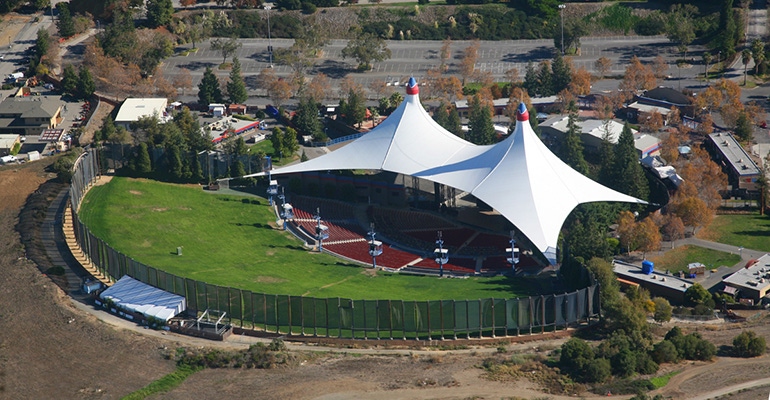Whether landfill owners lease or sell to developers impacts the bottom line, as well as their roles moving forward.

Building a golf course, hotel or other project on a landfill presents unique challenges for the new property. But conversely, the reuse can pose conundrums for landfills, even once they are no longer accepting trash.
Methane is still generated for decades, but now gas collection systems have to operate completely underground. New structures might sit on top of, or near trash, and depending, there may be heavy, continual foot traffic–affecting settlement and other processes.
So, what does this mean for landfill owners once these sites take on a new life? It depends on whether they sell or lease the property, among considerations.
“For 30 years post-closure, you have to monitor gas, leachate, stability and erosion, and if there’s a problem, you have to fix it,” says Bob Isenberg, senior vice president at SCS Engineers. “Now, you want to put a structure on top or somewhere on the site. What you put on top of, inside or next to a landfill will affect runoff, infiltration, drainage, gas movement and possibly stability.”
The Mountain View, Calif., landfill had 13 million tons of refuse in place when it closed, and later became the site of a park with a golf course, amphitheater, sailing lake, walking trails, clubhouse and restaurants. The city is still charged with compliance.
“With our whole system underground now, it’s harder to repair and troubleshoot piping. Plus, the golf course has its own business going, and we have our process to make sure we meet regulatory requirements. When we have to fix something, it’s hard to find time windows that work with the golf course and us,” says Nirmal Sajjan, civil engineer for Mountain View Public Works Department – Public Services Division.
The golf course is irrigated regularly, with the moisture working its way down to the cap, which is further subject to more settlement from high foot traffic.
“We have to bring dirt in and also address drainage, so we have to bring in equipment. Sometimes, we come in early in the morning or late in the evening and set up lights to work. Sometimes, we have to delay maintenance,” says Sajjan.
The concert venue draws thousands of attendees at a time, and this use has major impacts on how the landfill is managed, says Pat Sullivan, senior vice president at SCS Engineers.
“Ahead of every concert, we do monitoring and inspection beyond a regular schedule,” he says. “We have to do extensive methane testing in these structures and on the lawn [the lawn is literally on top of trash] to make sure there’s no methane accumulation. We do a more extensive watch for cracks from settlement where methane can be emitted. And we bring in a lot more soil and replant grass constantly because of the extra weight and constant movement causing deterioration of soil and vegetative cover and, ultimately, settlement with low and high spots.”
Mountain View installed vault boxes in wellheads at each of its 270 vertical wells for added protection, which means extra work.
When these above-ground vaults collect gas, the vacuum on the wells must be increased or workers have to excavate around them and put on new seals to prevent leaks.
“We do quarterly inspections with an organic vapor analyzer to monitor each vault. If there are over 1,000 parts per million of methane, we need to take action,” says Sajjan.
Whether landfill owners lease or sell to developers impacts the bottom line, as well as their roles moving forward.
When owners sell the property, the buyer typically takes on liabilities while the landfill tends to generate less revenue. If landfill owners lease, they retain responsibility for post-closure management as well as liability with regard to compliance.
“What we’ve seen is private owners more often selling than leasing. And municipalities that own may be more open to private-public partnerships, where the municipality maintains ownership and responsibility for compliance while the developer develops the land and runs that development,” says Sullivan. “In the leasing scenario, especially, agreements have to be very specific in clarifying who is responsible for what, in advance.”
For landfill owners to protect themselves, says Sullivan, “You have to up your game with a high-performing gas system, cover system and groundwater remediation system. And this is in either the lease or sale scenario. With these developments, there are environmental issues that have to be dealt with, but they are manageable. And when managed well, they can be successful.”
About the Author(s)
You May Also Like




